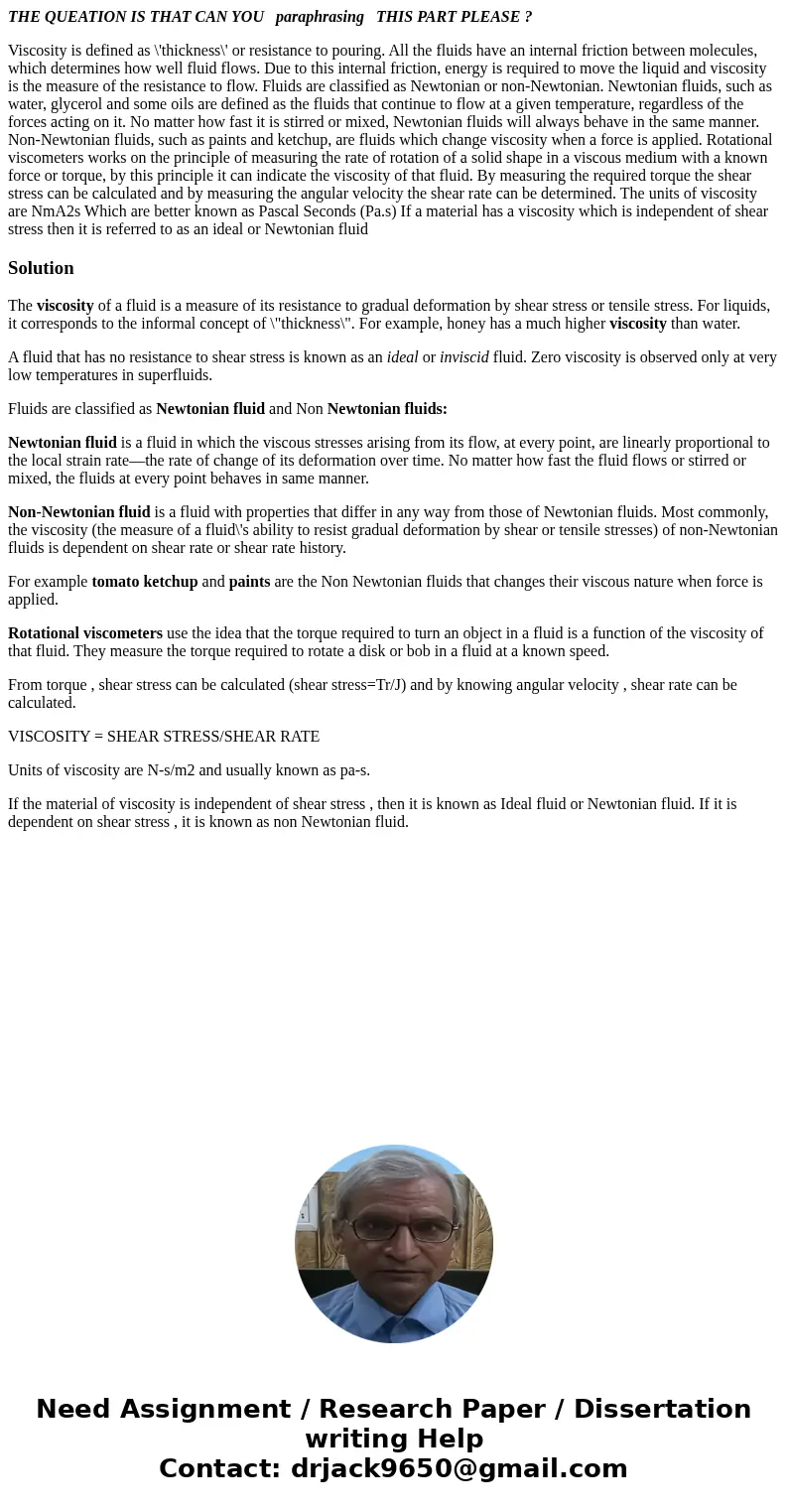THE QUEATION IS THAT CAN YOU paraphrasing THIS PART PLEASE
THE QUEATION IS THAT CAN YOU paraphrasing THIS PART PLEASE ?
Viscosity is defined as \'thickness\' or resistance to pouring. All the fluids have an internal friction between molecules, which determines how well fluid flows. Due to this internal friction, energy is required to move the liquid and viscosity is the measure of the resistance to flow. Fluids are classified as Newtonian or non-Newtonian. Newtonian fluids, such as water, glycerol and some oils are defined as the fluids that continue to flow at a given temperature, regardless of the forces acting on it. No matter how fast it is stirred or mixed, Newtonian fluids will always behave in the same manner. Non-Newtonian fluids, such as paints and ketchup, are fluids which change viscosity when a force is applied. Rotational viscometers works on the principle of measuring the rate of rotation of a solid shape in a viscous medium with a known force or torque, by this principle it can indicate the viscosity of that fluid. By measuring the required torque the shear stress can be calculated and by measuring the angular velocity the shear rate can be determined. The units of viscosity are NmA2s Which are better known as Pascal Seconds (Pa.s) If a material has a viscosity which is independent of shear stress then it is referred to as an ideal or Newtonian fluidSolution
The viscosity of a fluid is a measure of its resistance to gradual deformation by shear stress or tensile stress. For liquids, it corresponds to the informal concept of \"thickness\". For example, honey has a much higher viscosity than water.
A fluid that has no resistance to shear stress is known as an ideal or inviscid fluid. Zero viscosity is observed only at very low temperatures in superfluids.
Fluids are classified as Newtonian fluid and Non Newtonian fluids:
Newtonian fluid is a fluid in which the viscous stresses arising from its flow, at every point, are linearly proportional to the local strain rate—the rate of change of its deformation over time. No matter how fast the fluid flows or stirred or mixed, the fluids at every point behaves in same manner.
Non-Newtonian fluid is a fluid with properties that differ in any way from those of Newtonian fluids. Most commonly, the viscosity (the measure of a fluid\'s ability to resist gradual deformation by shear or tensile stresses) of non-Newtonian fluids is dependent on shear rate or shear rate history.
For example tomato ketchup and paints are the Non Newtonian fluids that changes their viscous nature when force is applied.
Rotational viscometers use the idea that the torque required to turn an object in a fluid is a function of the viscosity of that fluid. They measure the torque required to rotate a disk or bob in a fluid at a known speed.
From torque , shear stress can be calculated (shear stress=Tr/J) and by knowing angular velocity , shear rate can be calculated.
VISCOSITY = SHEAR STRESS/SHEAR RATE
Units of viscosity are N-s/m2 and usually known as pa-s.
If the material of viscosity is independent of shear stress , then it is known as Ideal fluid or Newtonian fluid. If it is dependent on shear stress , it is known as non Newtonian fluid.

 Homework Sourse
Homework Sourse